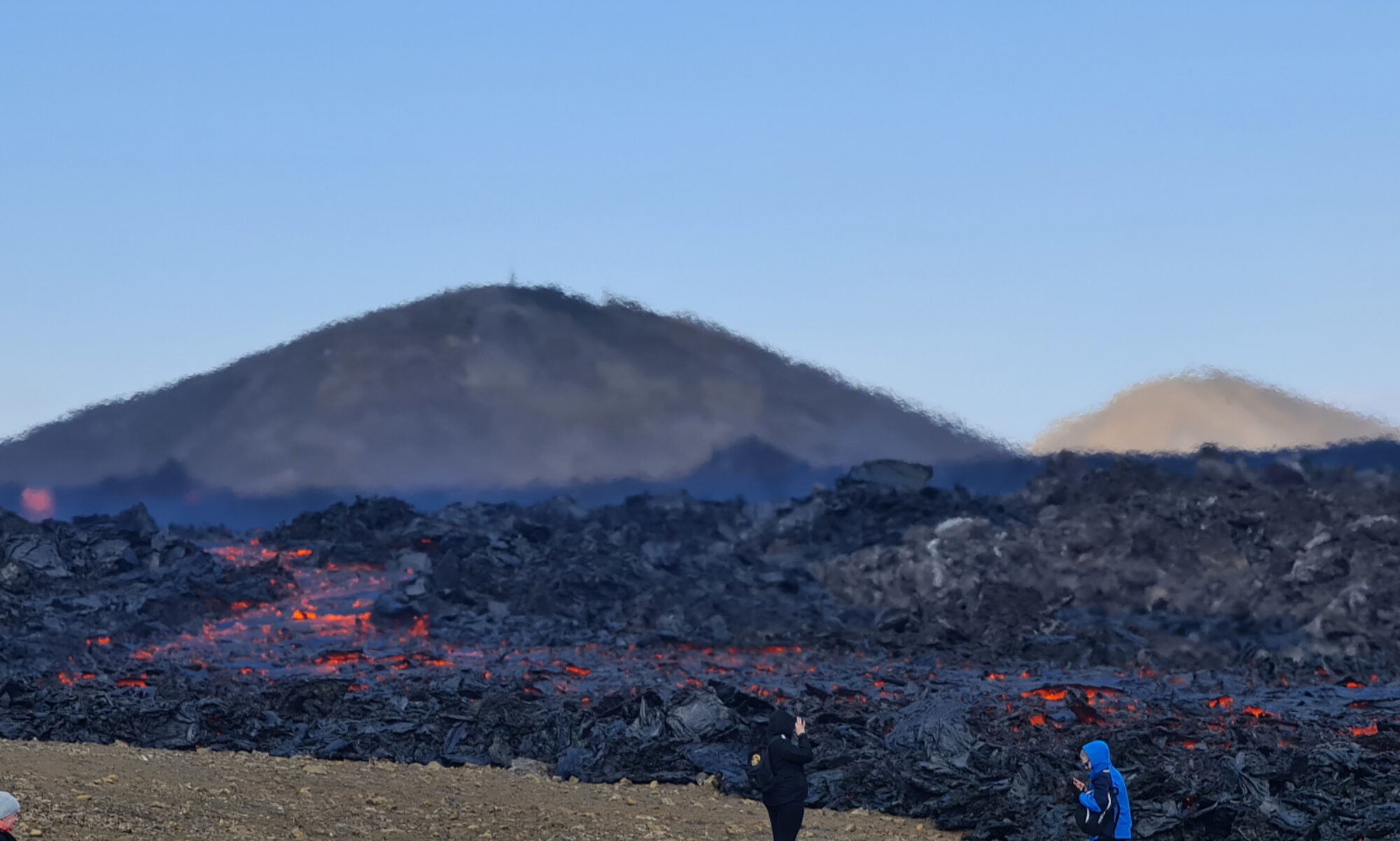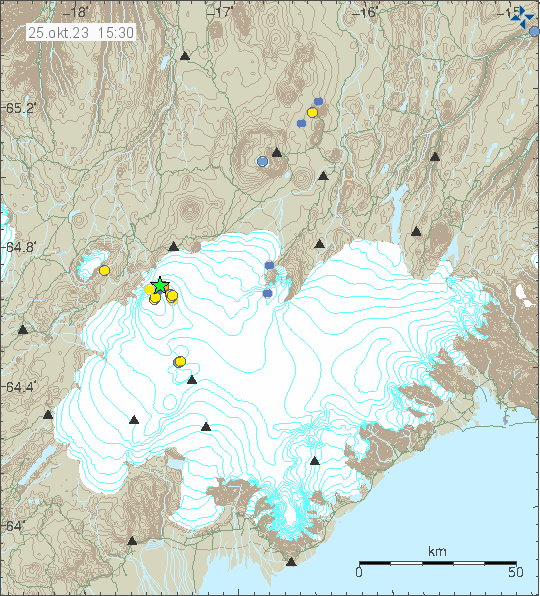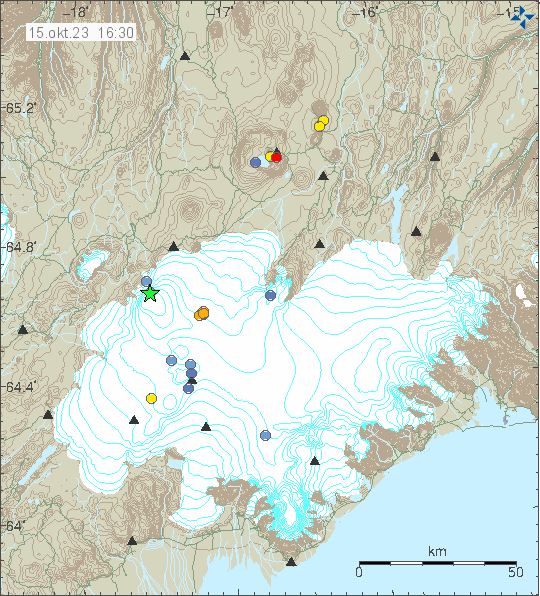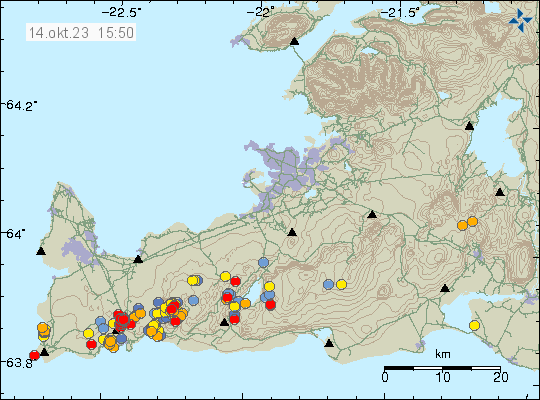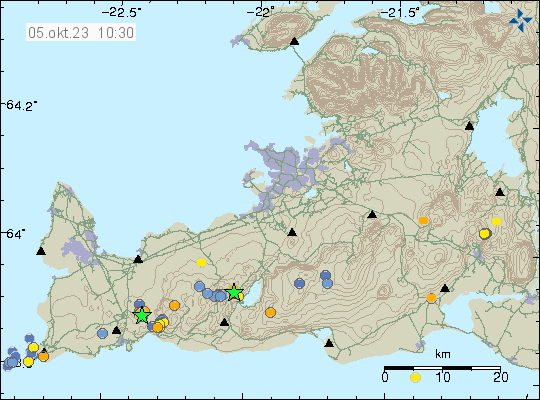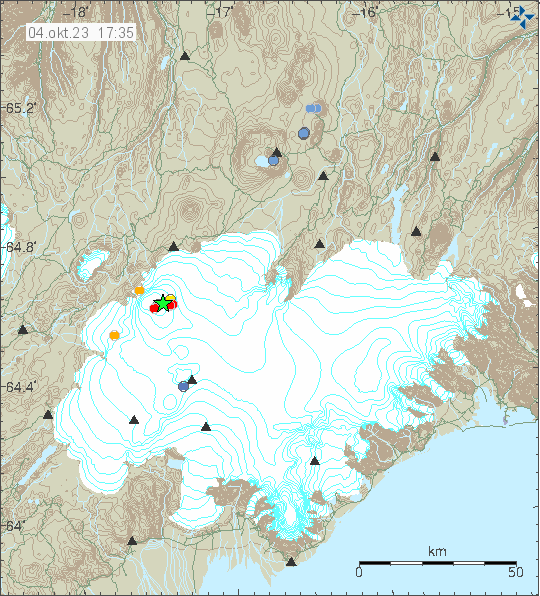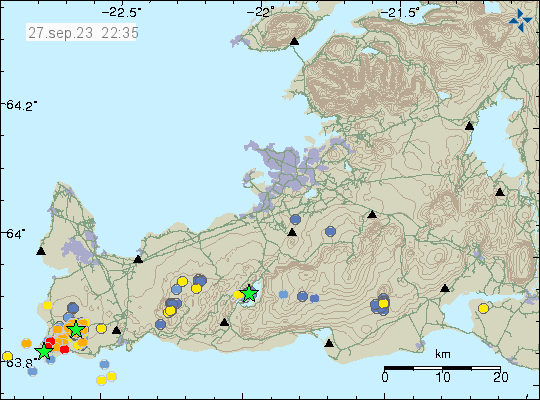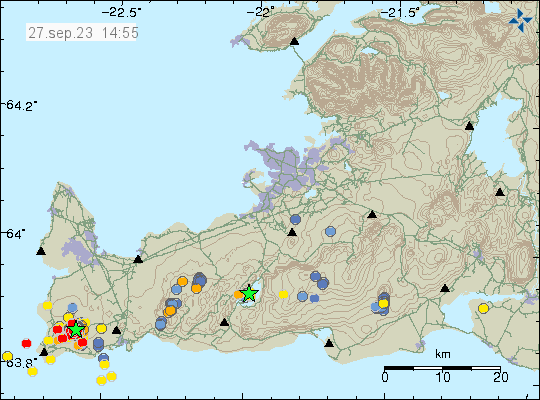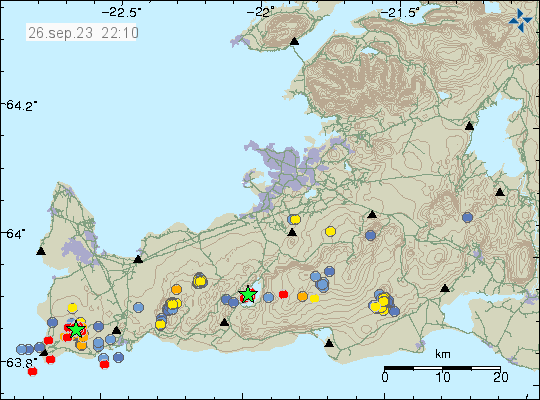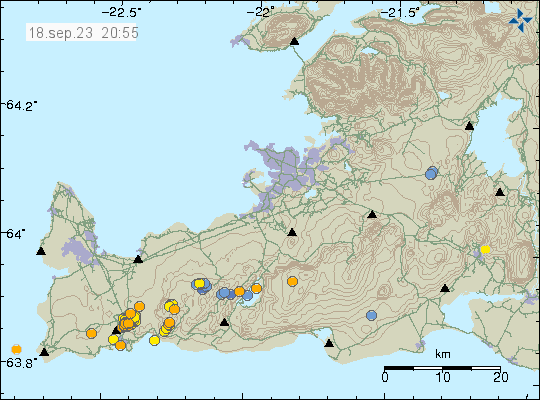This article is going to get outdated quickly.
Current activity is also complicated and might not behave in the same way as earlier eruptions did. Largest earthquakes at writing of this article have had magnitude of Mw3,5 and Mw4,5. Larger earthquakes can be expected without warning. There have been around 1000 smaller earthquakes at the writing of this article.
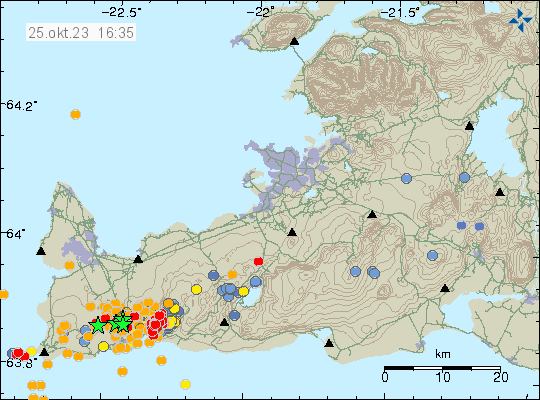
There is a good chance this events are not going to behave the same way as happened in earlier eruptions, because the location is little bit difference and that can result in a lot of change on what happens when magma pushes it self up through the crust. The earthquake activity close to Þorbjörn might be a mixed earthquake activity of tension breaking earthquakes and magma pushing it self up. GPS data doesn’t show any inflation close to Þorbjörn mountain at the writing of this article.
Earthquake activity is increasing in south part of Fagradalsfjall volcano, this is area in Nátthagi, Nátthagakriki and other nearby area. There is a dyke intrusion in that area and has been a while. That dyke intrusion might be about to erupt. There is a lot of uncertainty going on at the writing of this article. There is also a pattern of high and low in the earthquake activity, this has been the pattern in the earthquake activity before the earlier eruptions.
I’ll write updates about this activity as needed. It might take a while, since I always try to figure out what is going on before an article is written.
